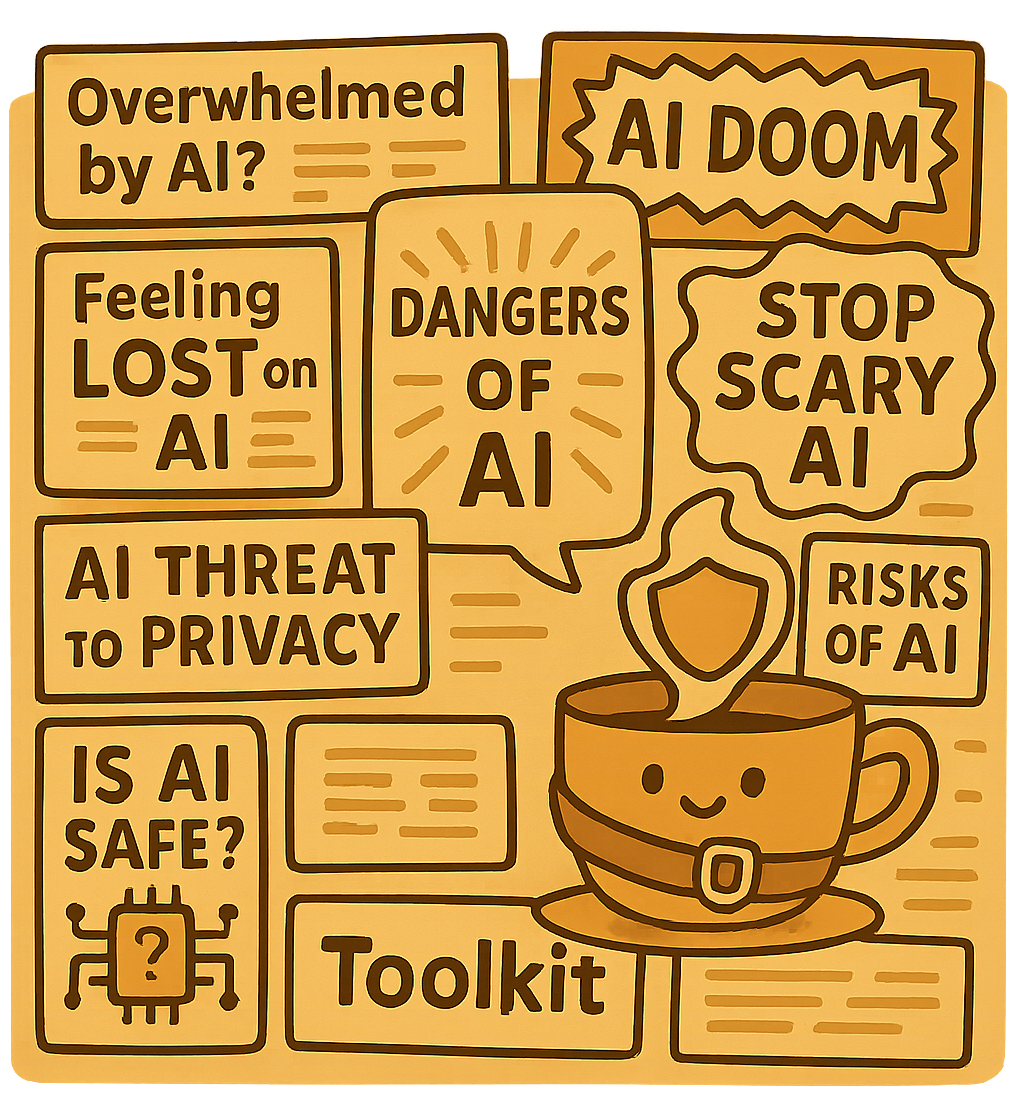Making AI safer for the world
Your AI SafeTea toolkit: Practical ways to protect what matters.

Toolkit
Curated tools to help you make sense of risks from AI, understand mitigation and control techniques. Take back control, privacy, and peace of mind.
AI Incident Tracker>
Problematic or unexpected outcome arising from AI, autonomous systems, or algorithms?
If Then Commitments
Voluntary commitments framework for AI developers & regulators to reduce catastrophic harm from AI systems
Robotic Malfunction: Amazon Warehouse Bear Spray Incident Hospitalizes 24
Severity 4/10: Autonomous machine punctures bear spray, causing mass chemical exposure and worker hospitalization at Amazon facility
AI-Generated Fake Passport Exposes Critical KYC Verification Vulnerabilities
Severity 6/10: ChatGPT-4o creates convincing passport forgery in 5 mins, threatening digital identity verification systems globally
AI Passport Forgery: ChatGPT-4o Exposes Critical Identity Verification Vulnerabilities
Severity 6/10: AI-generated fake passport bypasses KYC systems in 5 minutes, revealing massive digital identity verification risks.
AI-Powered Online Scams: A Significant Threat to Trust and Security
Severity 6/10: AI is making it easier for scammers to create sophisticated phishing and fraud attempts, posing risks of financial losses, privacy breaches, and erosion of public trust.
Cursor's AI Support Bot Hallucination Leads to Customer Backlash
Severity 4/10: Cursor faced customer frustration and subscription cancellations after an AI support bot provided an incorrect, fabricated response about a new login policy.
AI-Powered Online Scams: Streamlining Fraud at Scale
Severity 8/10: Scammers use AI tools to rapidly create convincing fraudulent websites and social engineering tactics, leading to a surge in online scams.
AI-Enabled Financial Aid Fraud Exploits California Community Colleges
Severity 6/10: Scammers use AI tools to create fake student identities, stealing millions in federal aid from California colleges.
YouTube AI Perpetuates Eating Disorder in 14-Year-Old
Severity 5/10: YouTube's algorithm recommended harmful content that worsened a teenager's eating disorder, causing significant physical and mental health impacts.
Beloved SF Bodega Cat Killed by Driverless Waymo Cab, Sparking Outrage
Severity 7/10: A beloved San Francisco bodega cat named KitKat was killed by a driverless Waymo cab, causing significant emotional and social impact.